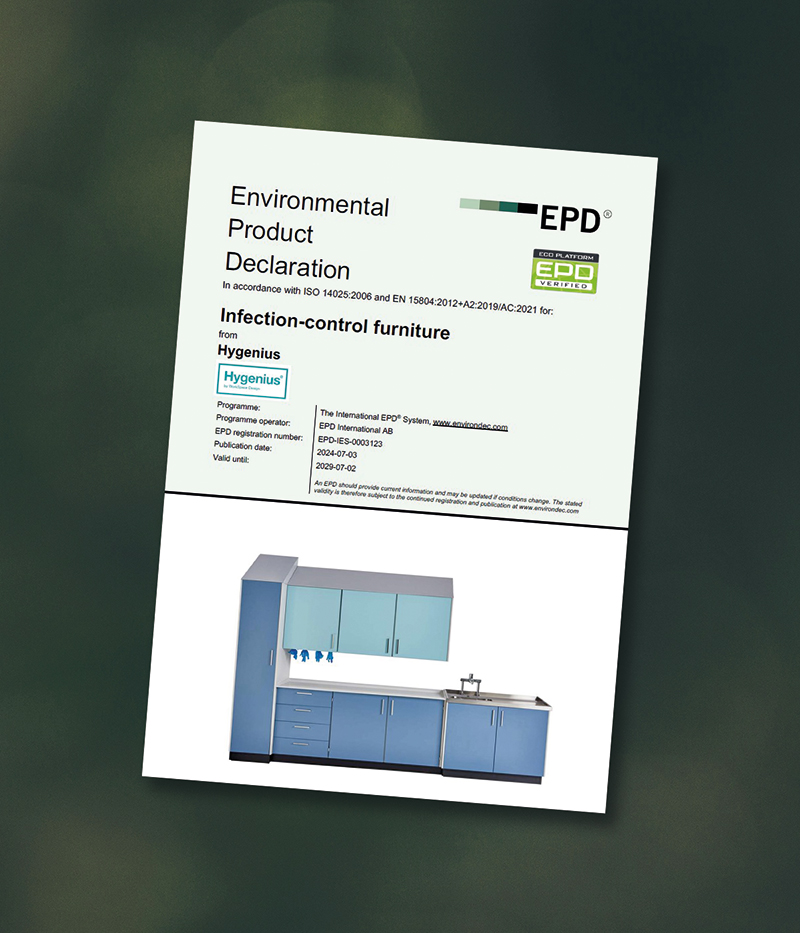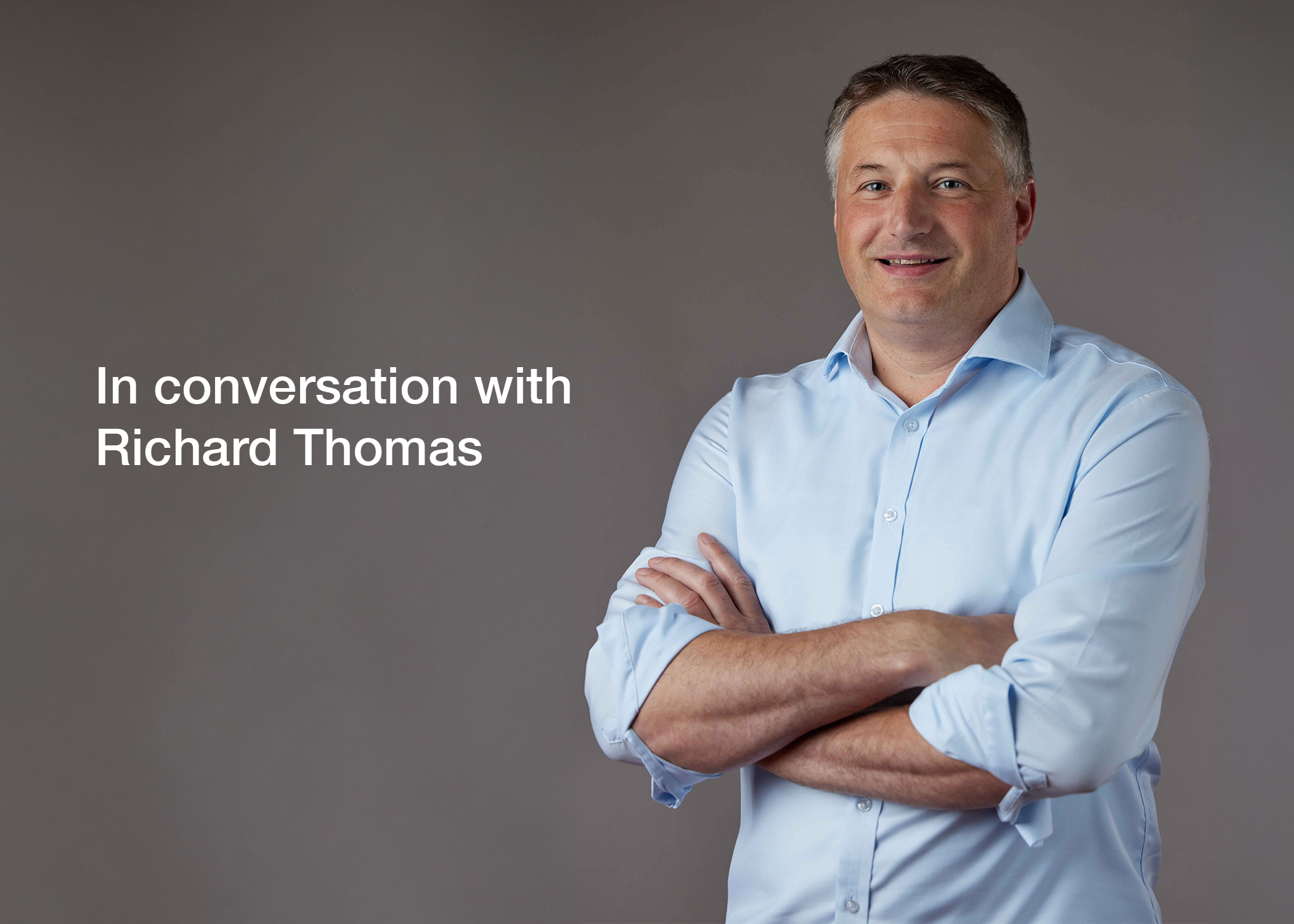Sustainable Healthcare: Reducing the Carbon Footprint of FF&E – In conversation with Richard Thomas, Managing Director at Hygenius.
For more than 50 years, Hygenius has been a trusted supplier of infection control furniture and fittings to healthcare environments across the UK. As sustainability becomes a defining focus within the NHS, Managing Director Richard Thomas discusses the company’s commitment to carbon transparency and its steps toward a net-zero future.
Q: What are the biggest sustainability challenges NHS trusts face when it comes to FF&E?
RT: Infection control furniture is essential for maintaining hygiene and safety, but there’s now a growing awareness of its environmental impact. NHS trusts are under pressure to meet net-zero goals, so they’re increasingly seeking FF&E that’s durable, made from sustainable materials, and can be recycled or responsibly disposed of at end of life.
Q: How important is material choice in helping the NHS reach net zero?
RT: It’s hugely important. The materials used in healthcare environments have a direct influence on their overall carbon footprint. At Hygenius, we prioritise sustainable materials such as Egger and Himacs, both recognised for responsible sourcing and efficient manufacturing. We also work with suppliers located close to project sites to reduce transport emissions wherever possible.
Q: How can architects, contractors and healthcare teams contribute to lowering carbon emissions through FF&E?
RT: Everyone involved in the design and procurement process has a role to play. Architects can specify low-carbon, responsibly sourced materials and consider lifecycle impacts. Contractors can ensure efficient installation and procurement aligned to those sustainability goals. And healthcare staff contribute by ensuring furniture is maintained properly so it lasts longer — reducing the need for replacements.
Q: Hygenius recently achieved Environmental Product Declaration (EPD) certification. What did you learn from that process?
RT: The EPD process really highlighted how material choices affect carbon emissions. For example, using a 12mm thermoformed acrylic solid surface instead of a 40mm MDF laminate worktop can reduce emissions by up to 16%. Similarly, switching from MDF to MFC can lower emissions by around 6%. This kind of insight helps us and our customers make informed, data-driven decisions.
Q: How will you share this data with customers?
RT: Transparency is key. We’re developing a simple LCA (Life Cycle Assessment) calculator with our sustainability consultant to help clients compare materials and make lower-carbon choices for their FF&E projects.
Q: Have you assessed Hygenius’ own carbon footprint?
RT: Yes. Our 2023 carbon footprint was 414 tonnes of CO₂ equivalent, measured across Scope 1, 2 and 3 emissions. This has given us a clear baseline and highlighted where we can make the biggest impact — including transport, energy use and supply chain emissions.
Q: What actions are you taking to cut those emissions?
RT: We’ve introduced a carbon reduction plan covering everything from logistics to energy efficiency. We’re optimising deliveries, partnering with haulage firms using alternative fuels, encouraging car sharing and EV use among staff, switching entirely to renewable electricity, installing LED and motion-sensor lighting, and increasing the use of recycled materials in our products.
Q: Do you have defined targets for achieving net zero?
RT: Absolutely. Our goal is to reach net zero by 2050, with interim targets to cut Scope 1 and 2 emissions by 20% by 2030, and Scope 3 emissions by 20% in the same period. We’ll review progress each year to ensure we’re on track.
Q: What advice would you give to other suppliers considering EPD certification?
RT: Understand the value it brings to your customers — especially if you work with NHS trusts, where sustainability is central to procurement. Choose the right certification programme, and if needed, bring in an environmental consultancy to guide the process. It’s a rigorous journey, but it’s worth it: EPD certification enhances trust, credibility and market access.
Joe Robinson, Quantity Surveyor at VINCI Building, also recognises the value of sustainability in healthcare projects:
“Sustainability is a core principle for VINCI Building. When specifying FF&E, we look for products that are both durable and responsibly produced. Working with Hygenius helped us meet our BREEAM targets at the Royal Oldham Hospital, where their transparent carbon data supported our drive for a BREEAM Excellent rating. Responsible sourcing and measurable carbon performance are now key factors in every procurement decision.” – Joe Robinson, Quantity Surveyor at VINCI Building
Hygenius achieves EPD certification
We are pleased to have achieved an Environmental Product Declaration (EPD) certification for our infection control furniture. The certification, which is valid until 2029, has been awarded under the International EPD® System, a global programme for environmental declarations.



